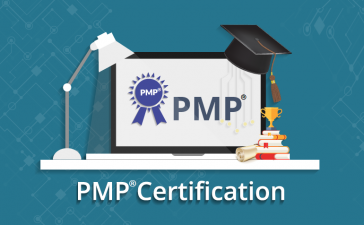Hi there,
Assuming you’ve come to know about business writing Vs creative writing. I’ll go over the definitions of business writing and creative writing, as well as their various forms, traits, and distinctions. While communicating with anyone, whether orally or in writing, there will always be ways to express rules, opinions, and thoughts, whether formal or informal.
In this approach, the key distinction between business writing and creative writing is that business writing is typically formal, but creative writing can be both formal and informal. So, let’s begin Business Writing Vs Creative Writing – What You Need To Know
Business Writing
Business writing is a specialized sort of writing that expresses the facts and details of products, services, organizations, internal communications, and other confidential information. This is target-oriented writing, and the people do expect a response from the main interest group.
Examples of business Writing include Emails, Memos, Handbooks, business reports, Meeting details, Business proposal letters, Letters of recommendation, Interview follow-up letters, Offer letters, Letters of resignation, notice letter, etc. Business writing will always be written in general tone that is sure, polite, and realistic; that uses greater emphasis and subjection wisely; that contains fair and equitable language and that is written at a reasonable level of difficulty”
Types of Business Writing
There are four types of business writing and they are informational writing, instructional writing, persuasive writing, and transactional writing.
1. Informational Writing
One of the most important ways we can communicate through the written word is through information. Informative writing can be found in almost every aspect of daily life which includes newspapers, Any recipe, instruction manual, or reference book Whatever is written to clarify a topic for the reader is informational writing; the reader will frequently depart having received new valuable information and entertaining information.
2. Instructional Writing
A practice of instructing, an explanation of how to do something, or a request are all examples of instructional writing. Guidance is someone what to do? The act of instructing, training, or supplying information or expertise to another person.
When creating guidelines, keep the following aspects in mind: A title that expresses the purpose of the directives. To assist the reader in choosing a decision, a quick description of where the instructions are leading is provided. A list of the goods or devices needed by the user to follow the directions.Persuasive Writing
3. Transactional Writing
Texts that deal with facts, suppositions, and the current reality are frequently portrayed as genuine. Value-based writing is verified writing that is used to communicate information between individuals or groups.
Examples of transactional writing include Papers and magazine articles, as well as booklets regarding governments and products. Transactional writing also includes letters and communications that you might send to friends to remind them of what you’ve relied on or to provide important information.
4. Persuasive Writing
Persuasive writing can be direct, focusing on a specific issue, or backhanded, emphasizing the need of maintaining a positive client connection. The objective is to pass data and then persuade the user that the introduced data is the most valuable.
The goal of persuasive writing is to pique the reader’s interest and influence their decision. It disseminates relevant information to persuade them that a specific commodity, administration, organization, or relationship is the best value. This type of writing is frequently associated with marketing and sales.
Qualities of business writing
- The nature of business communication should be sensible.
- To save time, it should keep away from data that isn’t there or isn’t useful.
- Any effective business communication should have a clear purpose or goal. In correspondence, there should be no doubt.
- The attention of the audience should be drawn. The rhetoric used to focus on the crowd should not be aimed at them.
- It should be a true data exchange.
- There are no representations, attractive statements, or novel sayings that can be used.
- It should be brief and simple to comprehend..
- When communicating, use pleasant and respectful language all of the time.
- It should be convincing.
- It should be based on raw data.
- There should be no deep-seated convictions.
- It should be based on a common understanding.
- For business writing, it is necessary to provide a precise layout.
Creative writing
Creative writing is the art of creating content that isn’t scholastic or specialized but attracts a crowd. Creative writing can be defined as any writing that is distinctive and self-expressive, regardless of the definition. A manual report, for example, cannot be considered creative writing because its primary goal is to introduce realities rather than to explain the writer’s feelings. While a news story might be entertaining, its primary purpose is to present current events.
The purpose of creative writing, like devotion or sorrow, is to engage and share the human experience. Through poetics and storytelling, essayists attempt to contribute to reality about humanity. If you wish to try your hand at creative writing, keep in mind that the first step is to use your creative thinking, regardless of whether you’re trying to transmit an emotion or an idea.

Types of creative writing
There are four types in creative writing and they are persuasive, narrative, expository, and descriptive.
1. Persuasive
Persuasive writing is a style of creative writing that emphasizes careful word choice, the progression of reasonable arguments, and a long-lasting summary. individuals can be guided through a series of simple steps to improve their persuasive writing skills.
Persuasive writing helps aspirants arrange clear causes behind their viewpoints and provides them the opportunity to explore realities related to those opinions. As writers, we get an understanding of how writing might influence or modify another’s thoughts or activities.
2. Narrative
A sequence of written words, still or moving visuals, or any combination of these can be used to introduce a narrative. It is the creative writing technique in which the storyteller imparts directly to the reader, which is all the more barely defined.
The oldest method of conveying narratives was through story writing. Narratives are used to instruct the vast majority of children on proper behavior, social history, and the formation of a shared character and values, as is particularly considered in human sciences nowadays among traditional native people groups.
Creative writing can be found in a variety of human endeavors, including discourse, writing, drama, music and melody, comedies, news coverage, film, TV and video, computer games, radio, game-play, unstructured entertainment, and execution in general.
3. Expository
Expository style is used in creative writing and it is a type of written presentation that is used to explain, portray, provide information, or illuminate. The author of an explanatory work cannot assume that the reader or audience has prior knowledge or understanding of the topic being discussed.
One important point to keep in mind for the writer is to try to use terms that demonstrate what they are referring to rather than outright telling the reader what is being investigated. Because clarity necessitates strong association, one of the most effective ways to improve our exposition skills is to use headings to improve the text’s association.
4. Descriptive
Descriptive writing is a style of creative writing in which the writer makes details to create an image with words. This process will provide readers with realistic depictions of people, places, things, and events. The writer will also use descriptive writing to create tactile nuances to improve the comprehension experience.
When done correctly, the peruser will be able to make a connection through tactile cues such as seeing, hearing, smelling, touching, and tasting. These techniques will not only assist you in becoming a better writer, but they will also make your writing more appealing to readers.
Qualities of creative writing
- Creative writing is a type of writing that focuses on non-literal and symbolic content, and it is used to engage, provoke, and stir clients.
- Any writing that rises above the conventional expert, editorial, scholarly, or specialized artistic frameworks, generally defined by an emphasis on narrative, character development, and the use of abstract sayings, or with diverse verse and verse techniques, is considered creative writing.
- A capital letter is used in this type of writing. Because real isn’t fake, many readers and writers recognize that genuine isn’t uncreative.
- It is critical to put yourself out there and get your thoughts down on paper since writing does not become well recognized until it is composed.

Business Writing Vs Creative Writing
I would like to differentiate business writing and creative writing as per the below-mentioned aspects for better understanding.
Verifiability
There is a significant distinction between business and creative writing. Business writing is always written based on facts and creative writing is intended to express the original thoughts of the writer.
Purpose
The purpose of business writing is to convey important information. The reason for the archive is influenced by incorrect or unnecessary substance. Data should be valued for its increased substance and completeness when it comes to effective business writing.
There are main purposes for creative writing are when someone expresses their thoughts in writing, they usually do so to articulate their ideas, enlighten their reader, persuade a reader, or create an abstract work.
Content
Business writing refers to the ability to share information, persuade people, and assist them through writing is incredible. Clients can use writing in business to learn about services and products, analyze companies, and find relevant information. Sites, articles, SlideShare content, and other forms of business writing are already commonplace.
Creative writing refers to content derived from the author’s manner of reflection, feelings, or ideas. The creative thing is both innovative and athletic. It can be anything educational, knowledgeable, journalistic, or specialized, but it all delivers a sense of amusement to its readers.
Tone
The writer’s tone refers to his or her attitude or temperament. Making an inspirational atmosphere that passes on the message with friends, emotional language usually results in a better peruser reaction in business letters, articles, or general correspondence.
The manner you approach your plot and readers in creative writing is referred to as tone. It is comparable to the tone of voice in that it is established by word choice, sentence structure, character actions, and descriptions. It’s not so much what you write as it is how you write it that matters. Whimsical, urgent, nasty, pensive, flippant, earnest, bitter, anxious, awed, and nostalgic are some examples of tone words.
Platforms
Almost all business activities are planned, developed, carried out, and evaluated in some form of the written word. Reports and report outlines, letters, updates, and emails, in fact, any archive that conveys information about the company, are all included in these structures. They are, in general, printed copy documents that record the proposition, exercises, and outcomes of endless deals.
Squier, Scrivener, Google Docs, and Microsoft Word are the most well-known options for creative writing. Squier is the greatest book writing software since it’s designed specifically to help journalists write books quickly and successfully by providing a full set of highlights to assist any author working on any story.
Effective Writing
Individuals can get as far as anyone is concerned without taking as much time as is required while creating information. You’ll never have to sell information continuously again. In an information-driven economy, your thoughts are the most precious resource. Focus, development, uniqueness, coherence, and correctness are five aspects of good writing that are briefly described below. For business and creative writing, the traits listed above are very crucial.
Process of Writing
In any form of writing, five basic steps are included before submitting your work and they are planning, drafting, revising, editing, and proofreading.
Planning
Before you begin writing, make a plan. Start writing when you have a good idea of what you’ll write in each part. Your writing should be more genuine, clear, and logical, and you should focus more on your research. Making a good plan is a surefire way to get a head start on writing a good project.
Drafting
The drafting refers to the process of actually writing the article’s content. You’ll write several draughts of your paper as part of a dynamic process. Each new work in progress improves the previous one.
Revising
Revising is the process of making adjustments to a document during its creation to make it fit with the writer’s evolving intentions.
Editing
Editing entails refining the text’s grammatical accuracy, flow, arrangement, and style, as well as its general appeal. It also includes reviewing for spelling or grammar mistakes.
Proofreading
Editing entails thoroughly verifying a text for errors before sharing it. It is the final stage of the creative process, during which you correct small spelling and accentuation faults, grammatical errors, and arrange issues and inconsistencies.
Conclusion
Business writing and creative writing have different motives. Creative writing is meant to pique your interest, whereas business writing is meant to communicate information. Business writing (specialist writing) should be short, unambiguous, and straightforward. Your boss or colleague would prefer not to read a page or two for information that may have been put in a single sentence.
Regardless, creative writing must introduce characters, develop the tone, illustrate places, and sift out the plot twist. The two types of writing use similar phrase structures and language, but the goals are different.
Frequently asked Questions
1. What is the scope for business writing?
Ans. The scope of your business writing project. What kind of information is required, and how much of it will be sufficient for the reader to understand your goal? This will either be elementary, midway, or advanced, depending on the goal and the crowd.
Ans. Short, simple language and direct vocabulary are used in an appealing business letter. The easier it is to understand a letter, the better. Smooth advances should be used so that your phrases do not appear too rough.
Ans. Expository Writing
Ans. Audience, purpose, flow, style, presentation.
Ans. A creative writer’s style is essentially their writing style. It is the outcome of a writer’s decisions about word choice, tone, and syntax. When people read your work, they “feel” your voice.
Ans. Formal, friendly, optimistic, creative, assertive, encouraging etc.











I was previously confused between business and creative writing, but his blog has cleared my doubts helping me to choose what I want to do further. Such an amazing blog.